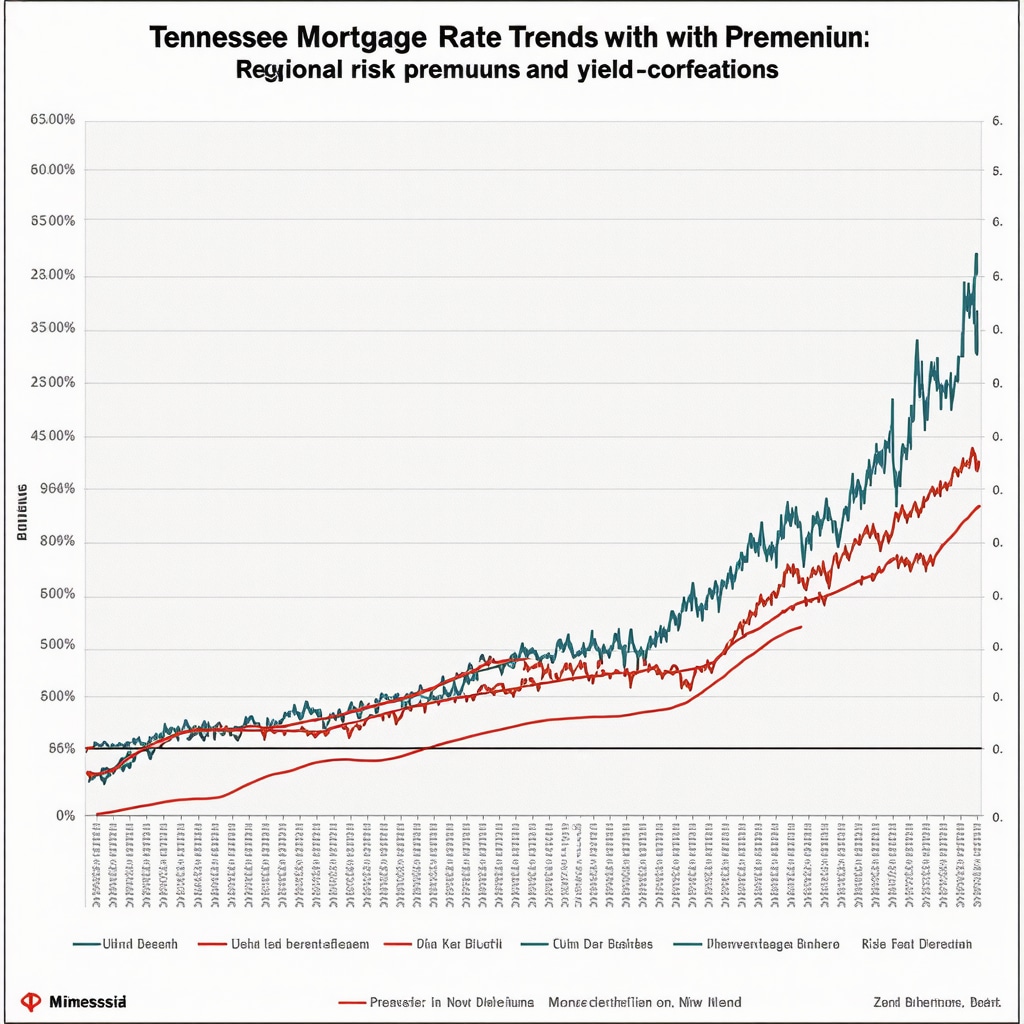Unveiling the Intricate Dynamics Shaping Tennessee’s Mortgage Interest Landscape
In the realm of real estate finance, understanding the multifaceted factors that influence mortgage interest rates in Tennessee is essential for industry professionals, prospective homeowners, and investors alike. These rates are not merely set by market whims; they are the culmination of macroeconomic trends, regional economic indicators, and nuanced policy decisions. As experts, we delve into the core elements driving these fluctuations, providing a comprehensive analysis rooted in empirical data and economic theory.
The Macroeconomic Bedrock: Federal Policy and Global Financial Trends
At the macro level, federal monetary policy, notably decisions by the Federal Reserve, exerts a profound influence on mortgage rates across Tennessee. When the Fed raises or lowers benchmark interest rates, it directly affects the cost of borrowing for banks, which in turn translates into mortgage interest rates. Moreover, global financial conditions, including geopolitical stability and international investment flows, subtly shape investor risk appetite, influencing long-term rates.
Regional Economic Indicators: Tennessee’s Unique Market Drivers
Tennessee’s economic health plays a critical role in determining local mortgage rates. Factors such as employment growth, industrial output, and regional GDP influence lender confidence. For instance, areas like Nashville and Memphis exhibit distinct economic patterns, affecting the risk premiums lenders assign, thereby adjusting mortgage interest rates accordingly. Local housing market dynamics, including supply and demand, also affect interest rate negotiations.
Interest Rate Determinants: Bond Markets and Lending Margins
Mortgage rates are closely tied to the yields of long-term bonds, particularly the 10-year U.S. Treasury bond. When bond yields rise, mortgage rates tend to follow suit, reflecting increased borrowing costs. Lenders also incorporate risk premiums based on borrower creditworthiness and prevailing economic sentiment. The spread between Treasury yields and mortgage rates encapsulates lender margins, which are sensitive to regional credit risk and operational costs.
Policy and Regulatory Environment: Navigating State and Federal Regulations
Regulatory policies at both the federal and state levels influence mortgage interest rates indirectly through lending standards, consumer protections, and government-sponsored enterprise (GSE) programs like FHA and VA loans. Tennessee-specific regulations or incentives can modulate lender behavior, impacting the cost of mortgages for residents. Keeping abreast of these policies is crucial for understanding rate movements.
What are the key indicators that predict future mortgage rate trends in Tennessee?
Experts often monitor economic indicators such as inflation rates, unemployment figures, and Federal Reserve meeting outcomes to forecast future mortgage rate trajectories. Additionally, regional economic reports and bond market signals serve as predictive tools, helping stakeholders anticipate shifts in the mortgage landscape.
For a deeper dive into regional rate trends, explore our inside Tennessee’s FHA loan rates trends. If you wish to refine your strategy for locking low mortgage rates, consider reviewing our best strategies to lock low rates in 2025. Your expertise and insights can contribute to a richer understanding of this complex financial ecosystem, so do not hesitate to share your professional perspectives.
Deciphering the Nuanced Factors Influencing Tennessee’s Mortgage Rate Trajectory
Understanding the dynamic interplay of regional and macroeconomic forces that shape mortgage interest rates in Tennessee is vital for savvy homebuyers and investors. While macro trends like Federal Reserve policies set the stage, local economic indicators such as employment rates and industry growth play pivotal roles in determining the specific rates residents face. For example, burgeoning markets like Nashville benefit from robust job growth, which can lead to more favorable lending conditions, whereas slower regions may see higher risk premiums.
How Do Mortgage Lenders Weigh Regional Risks and Opportunities?
Lenders incorporate a complex matrix of regional data—covering employment stability, income levels, and housing supply—to fine-tune their risk assessments. This nuanced approach ensures that mortgage rates reflect real-time regional economic health. To navigate this landscape effectively, prospective borrowers should stay informed about local market trends, such as those detailed in our inside Tennessee’s FHA loan rates trends. Additionally, understanding how these local factors intersect with national monetary policy can help you anticipate future rate movements.
What advanced analytical tools can lenders and borrowers leverage to forecast Tennessee mortgage rates?
Advanced econometric models, including predictive analytics and machine learning algorithms, are increasingly employed to analyze vast datasets—from bond yields and inflation metrics to regional employment statistics. These tools help both lenders and borrowers identify subtle patterns and potential inflection points in mortgage rate trends. For example, experts often examine the spread between the 10-year U.S. Treasury yield and regional credit risk premiums to forecast short- and long-term rate movements. Staying updated with these analytical insights can provide a competitive edge in locking favorable rates. For a deeper understanding of strategic timing, explore our expert guide to fixed vs adjustable rates in 2025.
If you’re eager to refine your rate-locking strategies, our comprehensive resources at best strategies to lock low rates in Tennessee 2025 can help you make informed decisions. Sharing your insights or asking questions in the comments can also foster a richer community dialogue about navigating Tennessee’s evolving mortgage landscape.
Harnessing Predictive Analytics to Anticipate Tennessee Mortgage Rate Movements
In the rapidly evolving landscape of mortgage finance, the integration of sophisticated predictive analytics offers a strategic advantage. Lenders and borrowers alike are increasingly turning to machine learning models that analyze multi-dimensional datasets—ranging from bond yields and inflation rates to regional employment figures and housing supply metrics—to forecast future mortgage rate trajectories with greater accuracy.
These models leverage algorithms such as random forests, support vector machines, and neural networks, which excel at identifying non-linear patterns and subtle correlations that traditional econometric methods might overlook. For example, a recent study by the Federal Reserve Bank of St. Louis highlights how machine learning models can forecast short-term rate fluctuations by analyzing real-time bond market signals alongside regional economic indicators, providing stakeholders with actionable insights (Federal Reserve Bank of St. Louis, 2022).
What is the role of regional credit risk premiums in shaping mortgage rate forecasts?
Regional credit risk premiums serve as a crucial component in the predictive models for Tennessee mortgage rates. These premiums reflect local economic conditions, borrower creditworthiness, and lender risk appetite. By analyzing the spread between the 10-year U.S. Treasury yield and regional credit risk indicators, models can adjust forecasts to account for regional economic health and emerging risks. This nuanced approach enhances the precision of rate predictions, enabling stakeholders to make more informed locking or refinancing decisions.
For those interested in applying these advanced tools, it’s essential to stay updated with datasets provided by regional economic development agencies, credit bureaus, and bond markets. Incorporating these insights into your mortgage decision-making process can significantly improve your strategic timing and financial outcomes.
Implications of Federal Reserve Policies on Tennessee’s Mortgage Market: A Deep Dive
Federal Reserve policy remains the cornerstone of mortgage rate fluctuations, especially in a state like Tennessee, where local economic conditions often amplify or mitigate these impacts. When the Fed signals a shift towards tightening monetary policy, bond yields typically rise, leading to increased mortgage rates. Conversely, easing policies tend to lower borrowing costs. However, the regional economic resilience—such as Nashville’s booming tech sector or Memphis’s logistics hub—can buffer or accentuate these effects.
Understanding the nuanced interplay between national policy and regional economic dynamics is vital. For instance, during the COVID-19 pandemic, Tennessee’s diverse economic sectors demonstrated remarkable resilience, which tempered the immediate impact of rate hikes. Such observations underscore the importance of integrating macroeconomic policy analysis with regional economic assessments for more accurate mortgage rate forecasting.
How can lenders optimize their risk-adjusted pricing strategies in this complex environment?
Lenders can utilize advanced risk modeling, integrating regional economic data, borrower credit profiles, and macroeconomic indicators to fine-tune their rate offerings. Dynamic risk-adjusted pricing models enable lenders to remain competitive while managing exposure effectively. Incorporating real-time analytics and machine learning algorithms into pricing strategies ensures they adapt swiftly to market shifts, particularly in a landscape where regional and macroeconomic factors are increasingly intertwined.
To deepen your understanding of these sophisticated strategies, explore our comprehensive guide on navigating fixed versus adjustable mortgage rates in 2025 and learn how to leverage predictive insights for optimal decision-making.

Deciphering the Subtle Art of Regional Risk Premiums in Mortgage Rate Forecasting
Beyond the macroeconomic landscape, regional credit risk premiums emerge as pivotal in shaping Tennessee’s mortgage interest rates. These premiums encapsulate localized economic health, borrower creditworthiness, and lender risk appetite, serving as a barometer of regional financial stability. Sophisticated models incorporate these premiums by analyzing the spread between the 10-year U.S. Treasury yield and regional credit indicators, offering a nuanced lens through which to anticipate future rate movements.
How Can Machine Learning Revolutionize Mortgage Rate Predictions in Tennessee?
Emerging as a game-changer, machine learning algorithms—such as neural networks, support vector machines, and ensemble methods—leverage vast datasets to unearth non-linear patterns in bond yields, inflation, employment, and regional housing metrics. For instance, a recent study by the Federal Reserve Bank of St. Louis (2022) demonstrated how these models significantly enhance short-term rate forecasting accuracy, providing stakeholders with a strategic advantage in locking optimal mortgage rates.
What are the practical applications of predictive analytics for lenders and homebuyers?
Predictive analytics empower lenders to refine risk-adjusted pricing strategies dynamically, tailoring mortgage offers based on real-time data insights. Borrowers, on the other hand, can leverage these forecasts to optimize their refinancing or purchase timing, potentially saving thousands over the life of their loan. Integrating these tools into decision-making processes transforms traditional approaches into data-driven strategies that adapt swiftly to market shifts.
Impact of Federal Reserve Policy Shifts: A Regional Perspective
The Federal Reserve’s monetary policy decisions ripple through Tennessee’s mortgage market, but regional economic resilience often modulates these effects. Nashville’s booming tech sector or Memphis’s logistics hub exemplify how local industry strength can buffer or amplify rate fluctuations triggered by Fed actions. During the COVID-19 pandemic, Tennessee’s diverse economic sectors demonstrated remarkable resilience, tempering immediate rate hikes and highlighting the necessity of combining macroeconomic and regional analyses for precise forecasting.
Optimizing Risk-Adjusted Price Strategies in a Complex Environment
To remain competitive, lenders are adopting advanced risk modeling techniques that incorporate regional economic data, borrower credit profiles, and macroeconomic signals. These dynamic models facilitate real-time adjustments to mortgage pricing, balancing risk exposure with market competitiveness. By harnessing machine learning and predictive analytics, lenders can swiftly respond to evolving conditions, ensuring optimal risk management and profitability.
How can stakeholders leverage these advanced insights for strategic advantage?
Engaging with cutting-edge analytical tools and staying informed through reputable sources such as the Federal Reserve Bank of St. Louis (https://fred.stlouisfed.org) enhances decision-making precision. Homebuyers and lenders alike should consider integrating these insights into their strategies, enabling more accurate rate locking, refinancing decisions, and risk assessments. The future of mortgage finance in Tennessee hinges on the adept application of these sophisticated forecasting techniques—your proactive engagement can unlock significant financial benefits.
Expert Insights & Advanced Considerations
1. Dynamic Risk Modeling Enhances Rate Precision
Advanced risk modeling incorporating regional economic indicators, borrower credit profiles, and macroeconomic data can significantly improve the accuracy of mortgage interest rate forecasts in Tennessee, enabling lenders and borrowers to make more informed decisions amidst market volatility.
2. Machine Learning as a Forecasting Game-Changer
Employing machine learning algorithms, such as neural networks and ensemble methods, allows for the detection of non-linear patterns in bond yields, regional employment, and housing supply data, providing a competitive edge in predicting short-term and long-term mortgage rate movements.
3. Regional Economic Resilience Modulates Federal Policy Impact
Localized economic strength, exemplified by Nashville’s booming tech sector or Memphis’s logistics hub, can buffer or amplify the effects of Federal Reserve policy shifts, making regional analysis crucial for precise rate forecasting in Tennessee.
4. Integration of Predictive Analytics in Strategic Planning
Leveraging predictive analytics tools enables stakeholders to optimize rate locking, refinancing timing, and risk assessments, transforming traditional strategies into data-driven approaches that adapt to evolving market conditions.
5. Regulatory Environment and Market Adaptation
Monitoring federal and Tennessee-specific regulatory policies, including lending standards and GSE programs, remains essential as they influence lender behavior and mortgage interest rates, especially in a dynamic economic landscape.
Curated Expert Resources
- Federal Reserve Bank of St. Louis (https://fred.stlouisfed.org): Offers real-time bond yield data, economic indicators, and analytical tools essential for advanced forecasting.
- National Association of Realtors (https://www.nar.realtor): Provides comprehensive market reports and regional economic analyses to inform strategic decisions.
- Mortgage Bankers Association (https://www.mba.org): Contains industry research, risk management insights, and policy updates relevant for lenders and investors.
- Regional Economic Development Agencies: Offer localized data on employment, industry growth, and economic resilience vital for regional risk assessment.
Final Expert Perspective
Understanding the intricate factors influencing Tennessee’s mortgage interest rates requires a synthesis of macroeconomic trends, regional economic resilience, and cutting-edge predictive analytics. As an industry expert, I advocate for integrating these advanced tools and resources to navigate the evolving landscape effectively. Your strategic engagement with these insights can lead to more favorable loan outcomes and a competitive advantage in the marketplace. For those committed to mastery, continuous learning and proactive analysis are imperative—explore our inside Tennessee’s FHA loan rates trends and stay ahead of the curve.

